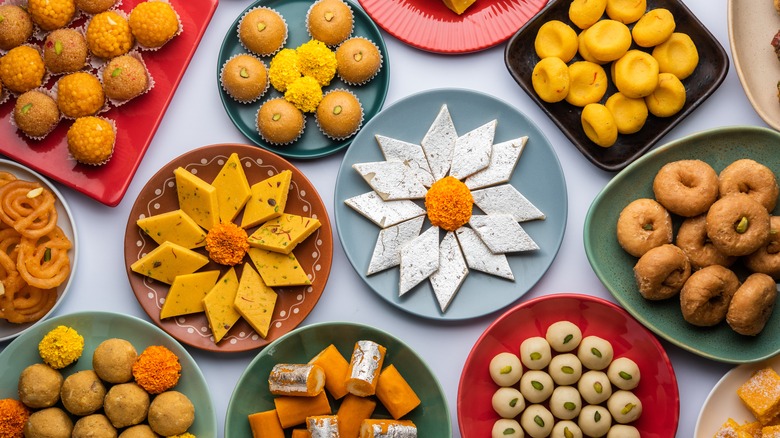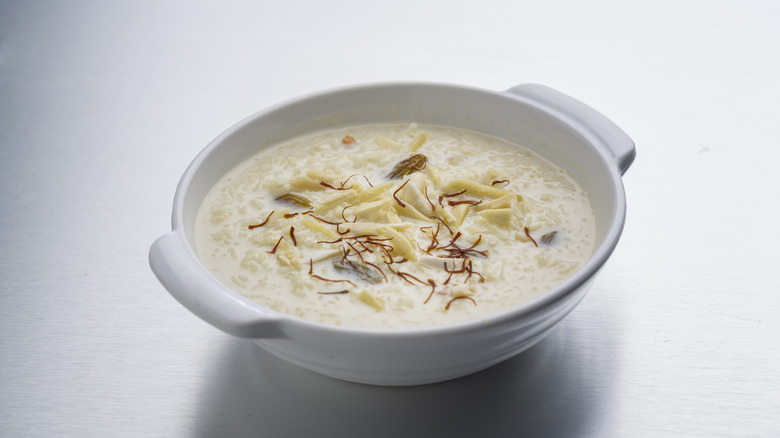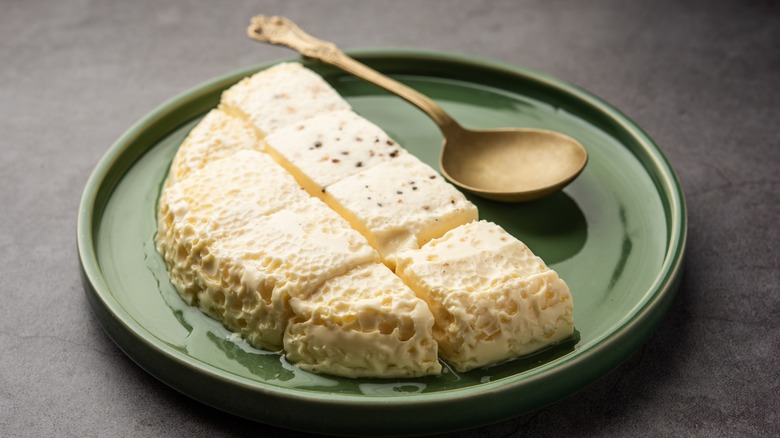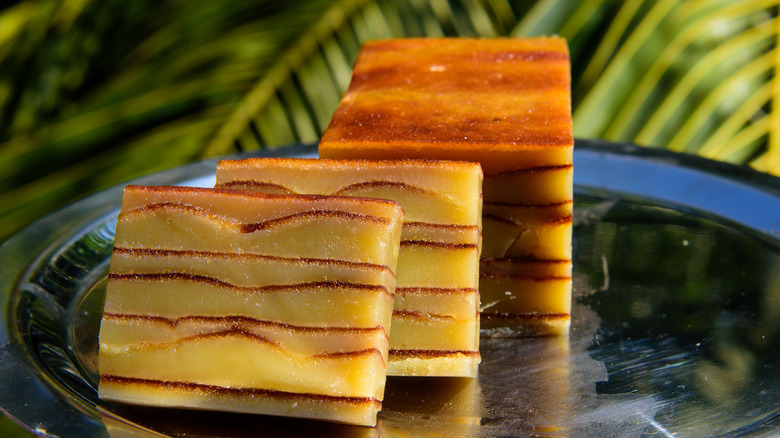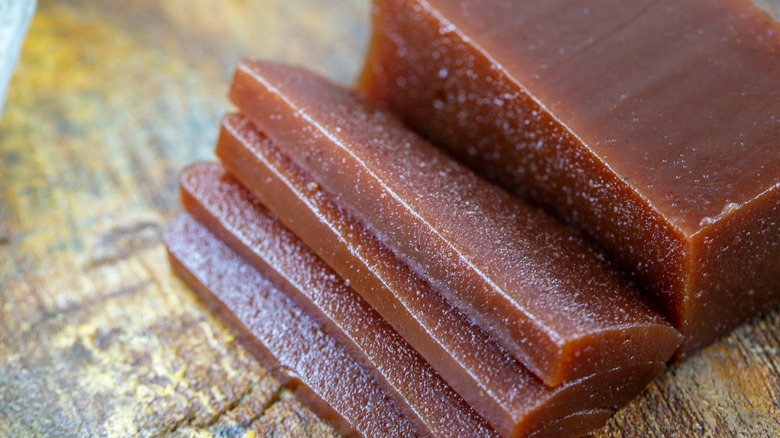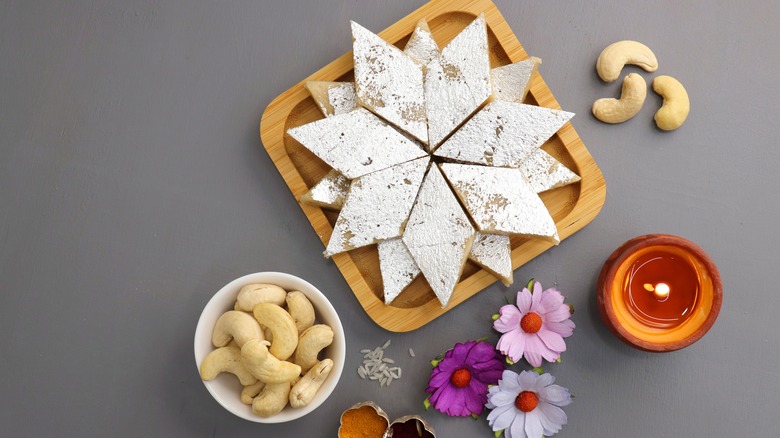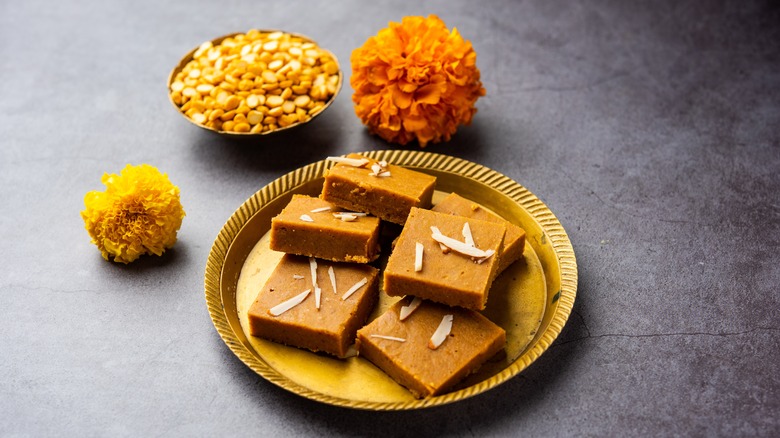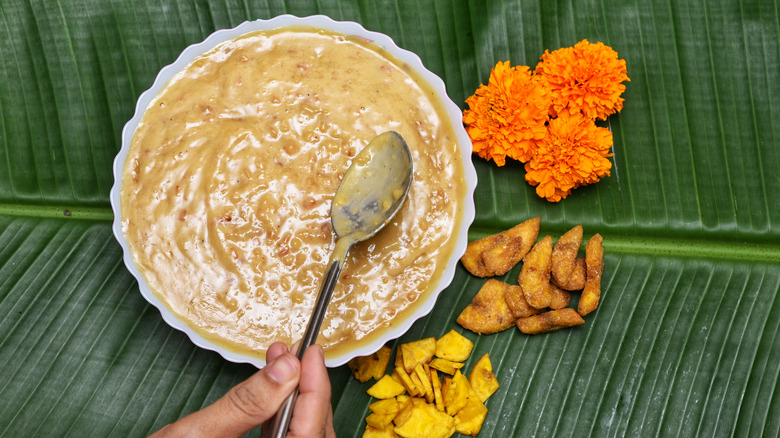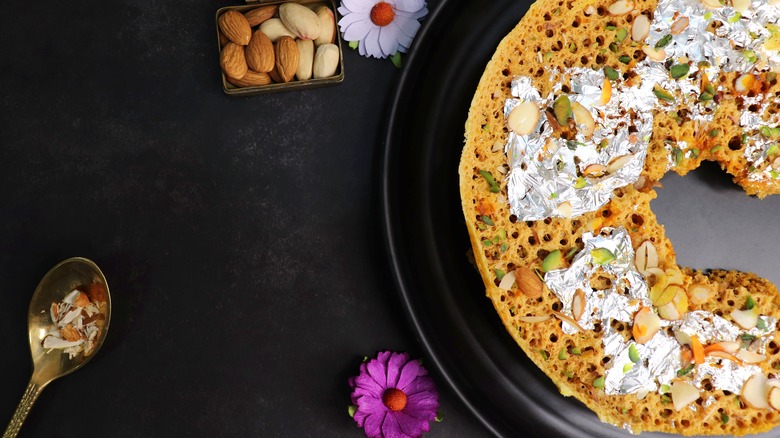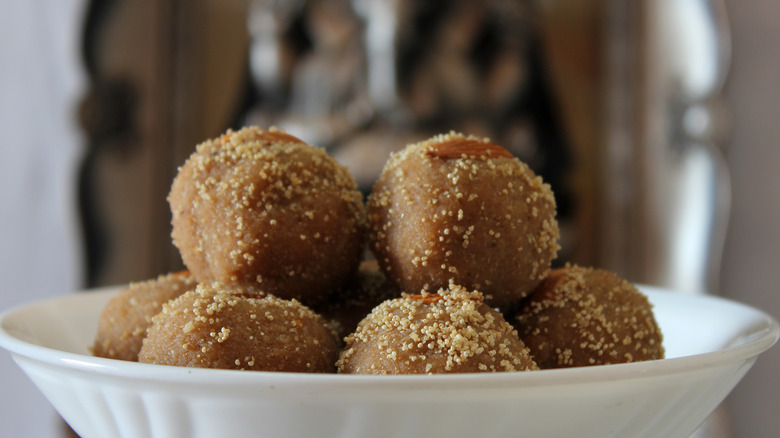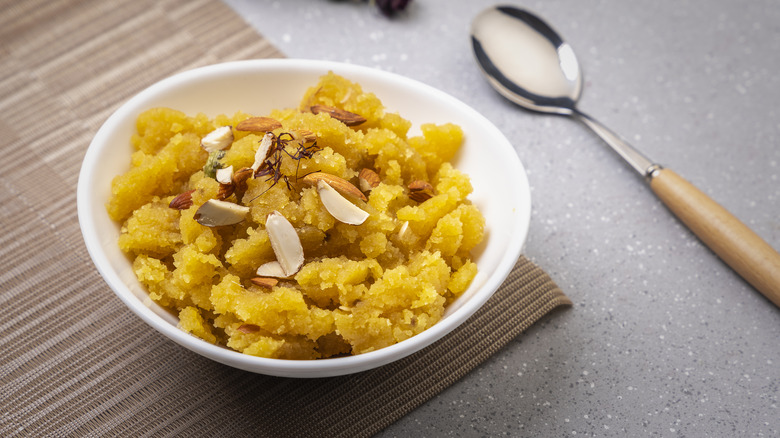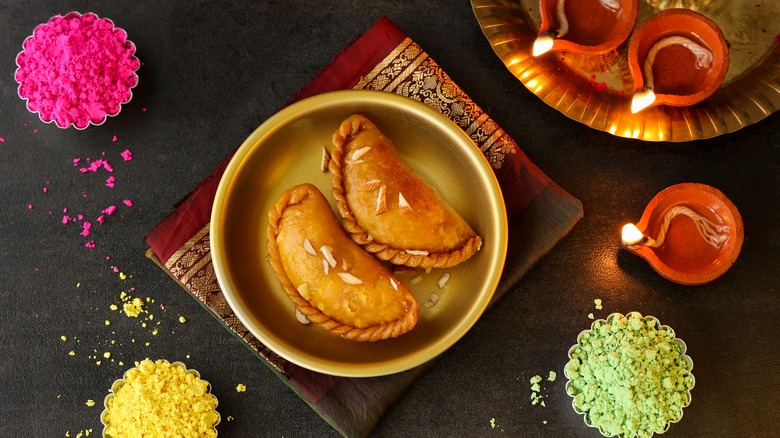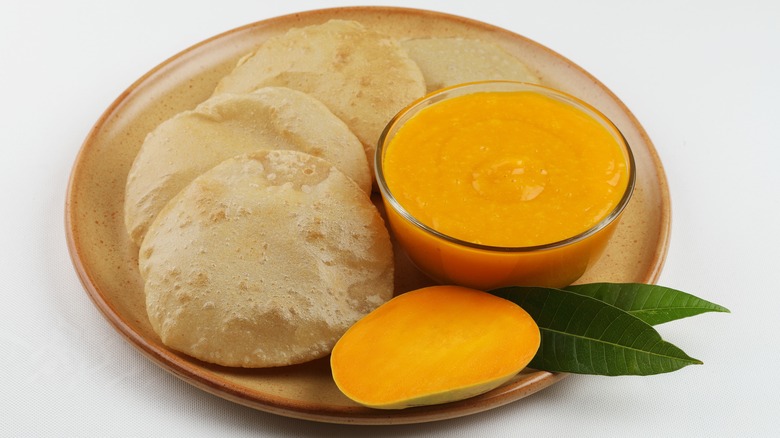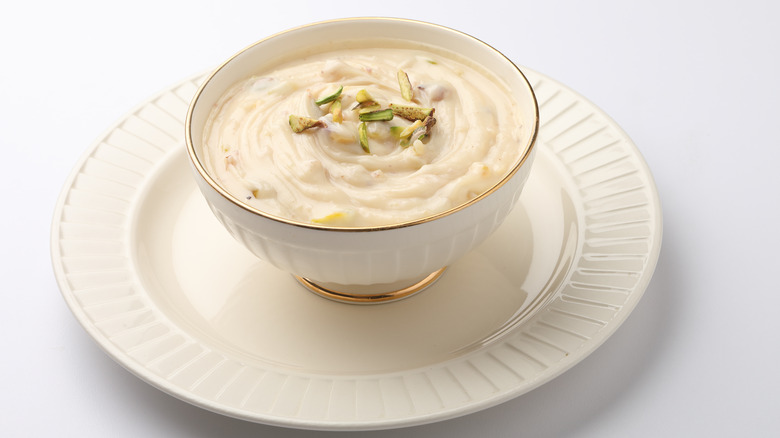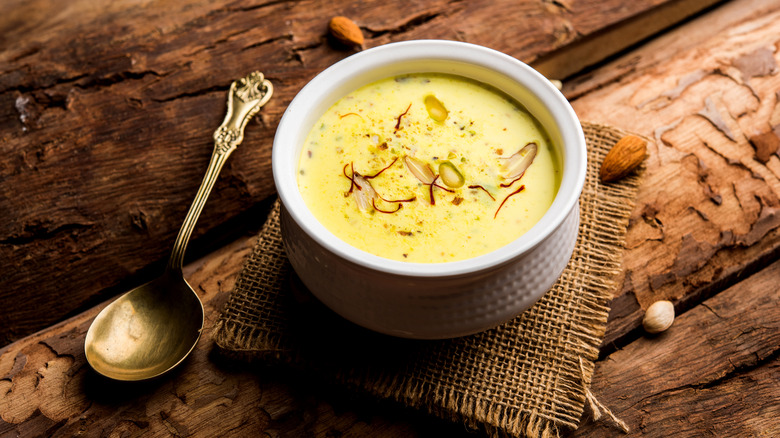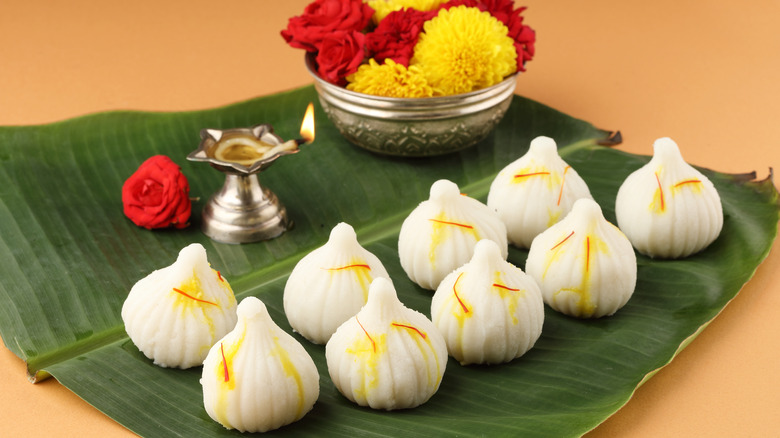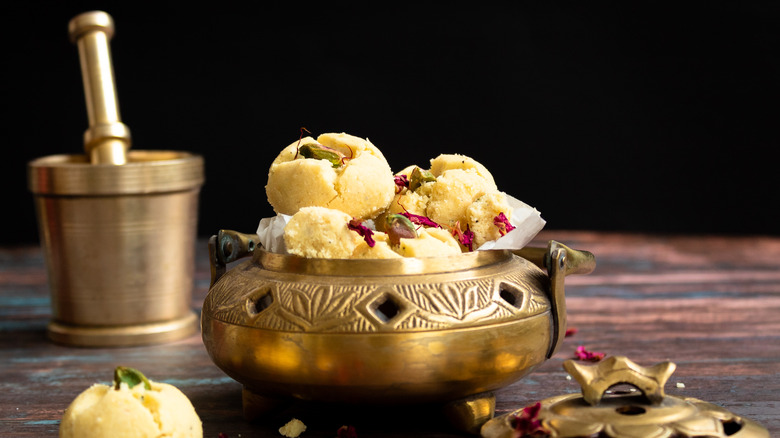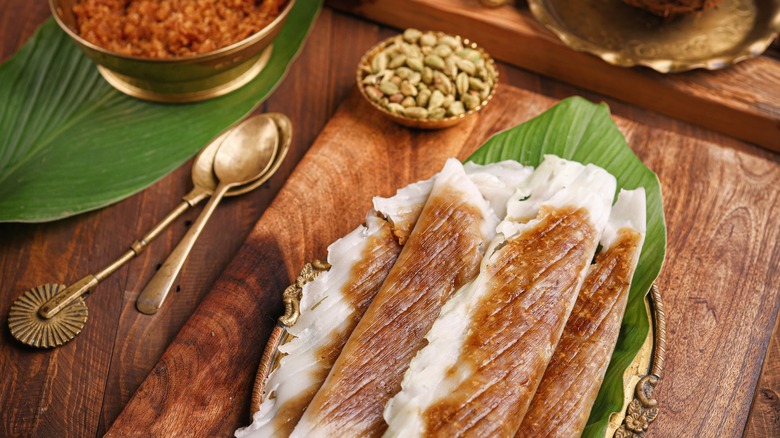18 Must-Try Western India Mithai
Indian cuisine is vast, complex, and rich with history, and a huge part of the culture is centered around sweets. Traditional Indian sweets, or mithai, vary greatly across the country, not to mention households, making the act of choosing a list of the best ones a difficult task. To help, we have collected some of the most delectable mithai, specifically from the western states of India, Goa, Maharashtra, Gujarat, Rajasthan, Daman and Diu, Dadra, and Nagar Haveli.
These states, like many other regions in India, base their mithai on some staple ingredients such as jaggery (unrefined sugar), mawa (milk solids), besan flour (gram or chickpea flour), and ghee (clarified butter). Whether you celebrate any Indian festivals such as Diwali, Holi, or Ganesh Chaturthi, or just have an insatiable sweet tooth and want to try the best desserts the world has to offer, this collection of Indian mithai is sure to inspire you to make something sweet.
Doodh pak
Doodh pak, originating from Gujarat, is made of sugar, milk, and rice that have been simmered down for a long time until they are flavorful and creamy. Unlike basundi, doodh pak has rice in it, in addition to nuts and fruits. It also differs from keehr in that it uses less rice, making the final dish thinner and more soup-like (via Mayuri's Jikoni).
Traditionally made for Diwali, specifically on Kali Chauda's Day, doodh pak is often served as an offering to ancestors. But since it is so delicious, doodh pak is commonly made all year round and eaten both hot and cold! Flavored with saffron and cardamom, this dessert is fragrant, floral, and beautifully delicate. The creaminess and soft bit of the rice also pair well with garnishes of almond or pistachio, which bring a wonderful crunch (via Tarladalal). Doodh pak is very easy to make at home and can be made vegan by substituting it with plant-based milk.
Kharvas
Kharvas, also known as junnu or ginnu in other parts of India, are made from cow colostrum, the milk cows produce in the first few days after they give birth (via Swasthi's Recipes). According to WebMD, cow colostrum boasts many health benefits, such as being high in protein and antibodies. Cow colostrum is also often thicker than regular milk, adding to the creamy and dense texture of kharvas.
So what are kharvas? They are a dessert made by boiling down milk until it is incredibly thick. According to Hebbars Kitchen, the final texture and appearance is similar to soft paneer but sweetened and flavored with cardamom. Because obtaining cow colostrum is not as easy as it once was, new ways to make kharvas include using powdered milk or sweetened condensed milk. The final kharvas are smooth, creamy, and very decadent. It pairs well with tea or coffee and is a very satisfying way to complete any meal.
Bebinca
Originating from the famous and gorgeous state of Goa, bebinca is a dessert that celebrates one of the most beloved fruits found in Goa: the coconut. Bebinca is made from coconut, flour, sugar, butter, and eggs, and the resulting dessert is pudding-like in texture and absolutely divine. The only caveat with bebinca is that it takes ages to make. Comprised of anywhere between seven and 16 layers, bebinca requires patience and time to let each layer bake before pouring the next one on, according to NDTV Food. The final dessert is striped and quite soft from the coconut milk.
If you have a chance to indulge in this dessert, make sure to savor it. Easier to find outside of Goa if you make it yourself, bebinca is labor-intensive but arguably better than the sum of its parts. The soft texture and fresh coconut flavor are irresistible, comforting, and a true treat.
Perad
This dessert has many names. Perad, parade, or simply guava cheese, is a dessert eaten in Goa around Christmas time and is commonly added to Christmas collections of Kuswar, traditional Goan Christmas sweets (via Kitchen Corner). Although the name is deceiving, guava cheese does not actually contain any cheese and is almost entirely guava. As per Goan Food Recipies, perad is made by simmering fresh guavas, straining them to remove the seeds, and then cooking down the puree with sugar and food coloring into a very thick paste. Once this puree sets overnight, it is dense, chewy, and flavorful.
Similar in preparation to pâte de fruit, perad is a great way to transform guava into an indulgent, texturally delightful sweet. The reason it may be so similar to pâte de fruit is that perad traces its origins back to the Portuguese who colonized Goa in the 1500s to 1960s (via Britannica). The Portuguese brought something called quince cheese to Goa. This quince cheese is very similar to Goan perad, except that it is made from quince. Other desserts similar to perad can be found around the world in other previous Portuguese colonies and guava-loving places.
Kaju katli
Made out of only four ingredients, kaju katli are simple and elegant, yet quite difficult to master. Kaju katli are a dense, chewy sweet that is made from ground cashews, sugar, and ghee. Slightly similar in texture to fudge, kaju katli gets their chewiness and smoothness from the combination of cashews and sugar, as well as through a kneading process that rids it of any graininess (via Dassana's Veg Recipies).
Kaju katli are widely enjoyed all throughout India, and kaju katli are commonly gifted during Diwali. A trick to making the best kaju katli is to use room-temperature cashews. So even though you should always store your nuts in the fridge, make sure to let them come to temp before making your kaju katli. Refrigerated or frozen cashews will release more fat and turn into a paste when you blend them instead of a powder. You can flavor your kaju katli with rose water or saffron, and it is common to find kaju katli decorated with warq or varak, especially for special occasions.
Surti ghari
Originating from the city of Surat in Gujarat, surti ghari is a regional sweet that is undeniably beloved. In fact, surti ghari is so loved that it has a yearly festival in its honor (via Tasted Recipes). The Chandi Padvo is an annual festival put on in Surat to celebrate surti ghari and other accompanying sweets, which then must be enjoyed under the moonlight to complete the full experience.
So what makes surti ghari so delicious? Made with a filling of mawa, almond flour, pistachios, and gram flour, wrapped in dough, and then deep fried in ghee, these sweets are everything you need. They are crunchy on the outside, sweet and nutty in the middle, and have a creaminess from the mawa that pairs perfectly with a hot drink. Surti ghari is also often filled with dried fruits and can come in even more elaborate variations like chocolate or topped with gold leaf.
Mohanthal
While you may be used to chickpeas in savory dishes, chickpea flour, or besan flour, is commonly used in Indian mithai. Besan flour brings a melt-in-the-mouth consistency to desserts, making them satisfying to nibble on as you sip tea or for any sweet treat. Mohanthal is made from besan flour, making the final dessert dense, fudge-like, and fragrant from saffron and cardamom. Commonly made as a Diwali sweet in the western states of Gujarat and Rajasthan, mohanthal come in variations depending on the region. The Gujarati preparation involves roasting the besan flour in ghee, while the Rajasthani method uses mawa (via Cook With Kushi).
The general process of making mohanthal includes incorporating ghee into the besan flour and then hydrating and cooking it with milk until the raw flavor is cooked out of the besan flour, and the final result is a thick paste. A sugar syrup, flavored with cardamon and saffron, is then added to the dough before it is turned out onto a pan to cool. You can garnish your mohanthal with silver foil or nuts for an additional flair and crunch.
Chana dal sabudana kheer
Chana dal sabudana kheer, also known as payasam or payasa, is a traditional sweet originating from Goa with variations all over the country. It uses lentils, tapioca pearls, and sometimes rice to make a thick sweet pudding. Dal, or lentils, can be both sweet or savory, and this preparation definitely falls in the dessert category. Sweetened with jaggery, a type of unrefined sugar, and flavored with cardamom and coconut milk, chana dal sabudana kheer is creamy, rich, and delicious (via Cook With Kushi).
Commonly made for special occasions like birthdays or specific festivals, chana dal sabudana kheer can come in many variations so that anyone can find a version they like. If you are not a fan of tapioca pearls, then leave them out! But if you love the texture of traditional kheer, then feel free to add rice. Both ways of preparing chana dal sabudana kheer are delicious and traditional, making this dessert even more of a crowd-pleaser.
Rabdi ghevar
Rabdi ghevar is an absolutely stunning mithai made from ghee, wheat flour and sweetened with syrup. The resulting dessert is feathery, crispy, and delicate. Shaped into a ring and fried in ghee, rabdi ghevar takes on a honeycomb pattern from the bubbles that form when the batter is fried. One of the tricks to making perfect rabdi ghevar is rubbing ice cubes in the ghee (via Cooking Carnival). This thickens the ghee and ensures that it will clump properly when mixed with the flour. The final batter is very smooth and thin, making it easy to pour as it fries.
Rabdi ghevar is a very popular mithai originating from Rajasthan and is happily enjoyed all year round and during festivals. It is served with a sweet syrup which contrasts the crunchy texture perfectly and can also be garnished with mawa, nuts, or rabri, a sweetened condensed milk.
Churma ladoo
Ladoo, or laddu, are common desserts found all across India and can come in many different flavors. Ladoo means round ball, which is very fitting considering that ladoo desserts are shaped (you guessed it) in balls (via Veggie Food Recipes). Churma ladoo, originating from Rajasthan and Gujarat, is made from whole wheat flour, jaggery, and ghee. These ingredients combine to create a dense, sweet, and a little bit crumbly authentic mithai.
Commonly eaten at Ganesh Chaturthi, the festival celebrating lord Ganesha, churma ladoo are also enjoyed throughout India all year round. The key to making churma ladoo is in the flour. You must use coarsely ground whole wheat flour to obtain the perfect gritty, almost crunchy texture. This flour is then made into a dough and fried before it is mixed in with the ghee and jaggery. The resulting churma ladoo is covered in poppy seeds and is a sufficiently satisfying way to conclude any meal.
Moong dhal halwa
There are many variations of halwa across India, from gajar ka halwa, or carrot halwa, to moong dhal halwa from Rajasthan. Halwa, inspired in name and preparation by the Persian halva, is a mithai that can be made from almost anything. Moong dhal halwa is made from moong dhal, or mung beans, and is a common cold-season treat that uses pantry staples which are available even during a cold winter (via NDTV Food).
Moong dhal halwa is the same soft, comforting texture as other Indian halwas and is decadently made with generous amounts of ghee, nuts, mawa, and spices. The combination of these ingredients results in a delicious, classic mithai that is perfect for staying cozy during a cold day.
Nevri
Known as nevri in Goa and karanji in Maharashtra, these sweet, deep-fried dumplings slightly resemble empanadas. Depending on the region, nevri and karanji fillings can vary. In Goa, it is common to have nevri with fresh coconut and jaggery, while in Maharashtra, karanji are usually filled with poppy seeds and dried fruit (via Dassana's Veg Recipes).
Regardless of their filling, these mithai are classically enjoyed during Diwali and Ganesh Chaturthi and must be eaten fresh because of the coconut inside. Nonetheless, they usually last only a short time because who can resist eating such deliciousness? The sweet filling combined with the crunchy, flaky dough on the outside makes nevri and karanji irresistibly wonderful.
Aamras
A dish that truly celebrates the simplistic beauty of mangoes, aamras is a summer staple in some western states such as Gujarat, Rajasthan, and Maharashtra. Made traditionally by blending mangoes by hand and then adding in small amounts of sugar and milk, aamras is a refreshing, fruity puree that is often enjoyed with puri. The puri can be dipped in the aamras, making for a sweet and crunchy snack (via Spice Up The Curry).
The best mango variety to use for aamras is the alphonso mango. Unfortunately, this mango is not commonly found outside of India, so if you are trying to make aamras at home, you can also try making it with atalupho mangoes, which are a Mexican variety. These mangoes have a similarly rich, fruity flavor but may need some additional sugar to make the perfect aamras.
Shrikhand
You will probably love this simple yet delicious dessert if you are a fan of thick yogurts like greek yogurt. Shrikhand, a mithai from Gujarat and Maharashtra, is incredibly simple and quick to make. Traditionally made from hung curd, or homemade yogurt, that thickens as the whey drains, this texture can be achieved by substituting greek yogurt so that the final dish is dense and creamy (via Dassana's Veg Recipies).
While this yogurt dessert may seem simple, it is a staple in west Indian weddings, meaning it is culturally vital and worth a try! Often flavored with cardamon and saffron in a beautiful duo of flavors, shrikhand can also be found or made with fruit purees, nuts, and seeds. Adding some textural element on top, like toasted pistachios, is a great way to contrast the creaminess of the shrikhand with a nice pop of crunch. This versatility makes shrikhand a very useful and irresistible dessert to have in your repertoire.
Basundi
Slightly similar in flavor and texture to dhood pak, basundi has all of the same creaminess but without the rice. This makes basundi a perfect vehicle for other flavors, meaning that it is commonly garnished with nuts, seeds, and dried fruit. Basundi is also similar to rabdi, which is more commonly found in the north of India rather than Gujarat and Maharashtra, which is where basundi hails from (via Dassana's Veg Recipes).
Basundi, with its thin, almost soupy consistency, is traditionally made by boiling down milk with sugar. These days, you can also take a shortcut and make basundi with sweetened condensed milk and whole milk to obtain the same syrupy consistency. Basundi is usually flavored with nutmeg and cardamom, making this dish very comforting and fragrant.
Modak
Modak actually refers to the overall mithai of modak, which comes in many variations. The modak from Maharashtra, ukadiche modak, is one of the most popular types of modak found in India and is also Lord Ganesha's favorite mithai and therefore made during Ganesh Chaturthi (via Dassana's Veg Recipies).
So what are they? Modak is steamed dumplings that can be molded into delicate forms or simply folded by hand. They can be put into a mold or shaped into a half-moon shape like nevri. Depending on the region, modak is filled and shaped differently. Traditionally filled with coconut and jaggery in Maharashtra, the ukadiche modak are then steamed until the dough is cooked and the inside is gooey from the jaggery. The dough of modak is made from rice flour, which gives this dessert an additional chew and tenderness.
Nankhatai
You may be thinking, nankhatai are all over India; they are not specifically from the west! And you're very correct. With countless regional variations, nankhatai can be found all over India, made with different flavors, flours, and fats. At their base, nankhatai are shortbread cookies made with fat, flour, and sugar (via Swasthi's Recipes).
In Gujarat, all-purpose flour and some whole wheat flour are combined with ghee and nutmeg to create a heavenly cookie. Unlike in other parts of India where eggs, semolina flour, and gram flour are often used in nankhatai, Gujarati cuisine keeps their nankhatai simple and dense, adding to the tenderness of their nankhatai with a long bake time (via The Route 2 Roots). Like any shortbread cookie, nankhatai pair perfectly with tea or coffee and melt in your mouth with their buttery texture.
Patholi
Patholi is common in the south of India and as far north as Goa, where banana trees and coconut grow bountifully. Patholi requires banana trees because they are often steamed in banana or turmeric leaves. Patholi are fairly similar to modak in that both mithai have the same filling. However, unlike modak, patholi can also be steamed in turmeric leaves which imparts a unique and irresistible flavor (via Cook with Kushi)
The dough for the outside of the patholi is made from rice, while the inside is made from coconut and jaggery, which creates a sugary, chewy, and almost nutty flavor. You can serve patholi with melted ghee or browned butter, but they are also just delicious as is!
